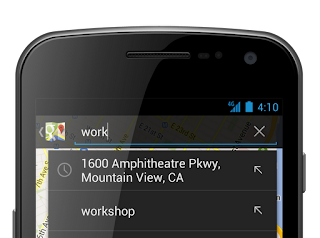Our quest to create the most comprehensive and accurate map of the world is ongoing, but we’re happy to take a pause and share some impressive progress that our
Google Maps and
Earth imagery teams have recently made. We’ve refreshed the high resolution
aerial and satellite imagery for many places around the world, and released some new 45 degree imagery as well.
New 45° imagery available for 51 cities:
In addition, 45° imagery is now available in Google Maps for 37 U.S. and 14 international locations. Below are some examples of the beautiful new views from Pisa, Italy and Winnipeg, Canada.
Probably one of the most famous landmarks in the world is the
Leaning Tower of Pisa. Its construction started back in 1173 and extended over a period of almost 350 years. Due to increasing incline during the last Century, a stabilization effort was performed that took almost two decades to complete. Today the tower is said to be safe from collapsing for at least 200 more years.
In the language of the native Cree people, the
city’s name of Winnipeg means “muddy waters.” The first European settlements in the area were several fur trading posts started around 1738. Today Winnipeg’s economic and educational significance within Canada is undoubted. Below is an image of The Forks which designates the confluence of the Red and Assiniboine Rivers.
New high resolution aerial and satellite imagery:
The aerial and satellite imagery in Google Maps and Earth has now been updated for 17 cities and 112 countries/regions. Below are a few highlights from our latest release:
The aerial image below shows the pentagon-shaped Citadel of Lille, in Lille, France. It was built in 1668 and designed by the great military engineer of the time, Sébastien Le Prestre de Vauban.
The next aerial imagery shown below was taken earlier this month of the Texas State Capitol and adjoining grounds in Austin, Texas. The building is recognized as a National Historic Landmark.
Below is the full list of places with new or updated imagery. Have fun exploring the new sites!
Cities with new high resolution 45° imagery:
United States: Ames, IA; Anderson, IN; Billings, MT; Bloomington, IL; Carmel Valley, CA; Cedar Rapids, IA; Coeur d'Alene, ID; Corvallis, OR; Danville, IL; Dayton, OH; Detroit, MI; Dubuque, IA; Elizabethtown, KY; Enid, OK; Florence, SC; Grand Forks, ND; Great Falls, MT; Gulfport, MS; Hartford, CT; Kankakee, IL; Kenosha, WI; Lafayette, IN; Lancaster, CA; Lansing, MI; Lewiston, ID; Los Banos, CA; Sun Prairie, WI; Medford, OR; Michigan City, IN; Olympia, WA; Pocatello, ID; Sheboygan, WI; Sioux City, IA; Sioux Falls, SD; South Bend, IN; Terre Haute, IN; Utica, NY.
International: Angers, France; Clermont-Ferrand, France; Coimbra, Portugal; Dijon, France; Grenoble, France; Livorno, Italy; Lyon, France; Newcastle, United Kingdom; Oberhausen, Germany; Palermo, Italy; Pisa, Italy; Toulouse, France; Troyes, France; Winnipeg, Canada.
Areas with new high resolution aerial updates:
Florence OR, Kellogg ID, Casper WY, North Platte NE, Concordia KS, Alva OK, Austin TX, Nevada MO, Chilicothe MO, Toulouse FR, Clermont-Ferrand FR, Angers FR, Nantes FR, Troyes FR, Lille FR, Thun CH, Lucca IT
Areas new high resolution satellite updates:
Canada, United States, Mexico, Cuba, Jamaica, Haiti, Dominican Republic, Guatemala, Honduras, Nicaragua, Costa Rica, Panama, Colombia, Venezuela, Brazil, Peru, Bolivia, Paraguay, Uruguay, Argentina, Antarctica, South Africa, Namibia, Botswana, Mozambique, Zimbabwe, Madagascar, Zambia, Angola, Malawi, Tanzania, Democratic Republic of the Congo, Kenya, Somalia, Ethiopia, South Sudan, Sudan, Uganda, Central African Republic, Nigeria, Cameroon, Chad, Niger, Benin, Ghana, Burkina Faso, Ivory Coast, Guinea, Sierra Leone, Mali, The Gambia, Senegal, Mauritania, Western Sahara, Morocco, Algeria, Tunisia, Libya, Egypt, Israel, Saudi Arabia, Yemen, Oman, Qatar, United Arab Emirates, Kuwait, Turkey, Iran, Ireland, Norway, Sweden, Portugal, Spain, France, Italy, Poland, Lithuania, Finland, Belarus, Ukraine, Moldova, Romania, Hungary, Austria, Croatia, Serbia, Bulgaria, Greece, Russia, Kazakhstan, Uzebekistan, Turkmenistan, China, Pakistan, India, Sri Lanka, Bangladesh, Thailand, Nepal, Bhutan, Myanmar, Laos, Vietnam, Korea, Japan, Mongolia, The Philippines, Malaysia, Indonesia, Australia, New Zealand
Posted by Bernd Steinert, Geo Data Specialist





















 Follow
Follow